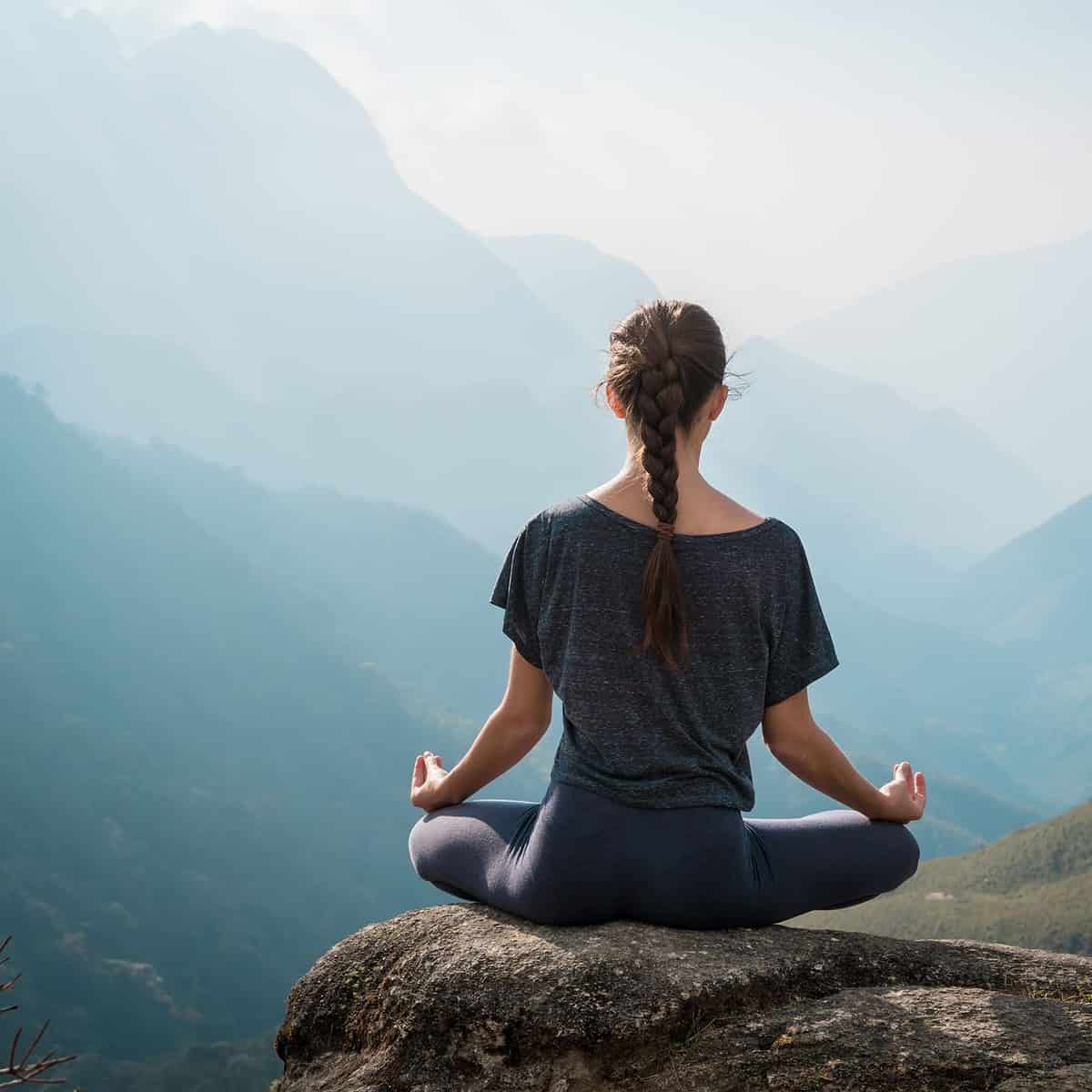Is persistent back pain causing havoc in your life? Do you find yourself yearning for a gentle and effective solution to this persistent discomfort? Look no further than the transformative combination of meditation and yoga for back pain relief!
In this comprehensive guide, we bring you the most sought-after insights and actionable steps to incorporate meditation into your yoga practice, paving the way for a pain-free and revitalized you.
Understanding the Link Between Meditation and Back Pain Relief
- The Mind-Body Connection: Harnessing the potent connection between the mind and body is vital in managing back pain. Meditation, with its calming influence on the mind, plays a pivotal role in easing physical tension.
- Relaxation Response: Meditation triggers the relaxation response in the body, reducing stress hormones that contribute to muscle tightness and pain.
- Improved Body Awareness: Through regular meditation, practitioners develop heightened body awareness, allowing them to identify and address areas of tension more effectively.
The Art of Meditation: A Beginner’s Guide
Meditation is a powerful practice that can bring immense benefits to your physical, mental, and emotional well-being. Whether you’re seeking stress relief, inner peace, or simply a moment of stillness amidst life’s chaos, meditation can be a transformative tool.
Here’s a step-by-step guide on how to meditate, so you can embark on this enriching journey with confidence.
1. Find a Calm and Quiet Space
Choose a tranquil spot where you won’t be disturbed during your meditation. It could be a cozy corner in your home, a serene garden, or even a quiet park. Creating a peaceful environment is crucial to help you focus and relax.
2. Get Comfortable
Sit in a comfortable position that allows you to maintain a straight spine. You can choose to sit on the floor with crossed legs or on a chair with your feet flat on the ground. Keep your hands relaxed on your lap or knees.
3. Focus on Your Breath
Close your eyes gently and take a few deep breaths. Feel the sensation of the air entering your nostrils and filling your lungs. As you exhale, let go of any tension you may be holding. Focus solely on your breath, using it as an anchor to stay present.
4. Embrace Mindfulness
As thoughts arise, acknowledge them without judgment, and then gently return your focus to your breath. It’s natural for the mind to wander, especially when starting meditation. Be patient with yourself and redirect your attention to the present moment.
5. Experiment with Different Techniques
There are various meditation techniques to explore. You can try guided meditations, where a recorded voice leads you through the practice. Alternatively, you may opt for mantra meditation, where you repeat a word or phrase silently. Explore different methods to find what resonates best with you.
6. Start with Short Sessions
In the beginning, aim for shorter meditation sessions, around 5 to 10 minutes. As you become more comfortable with the practice, you can gradually extend the duration. Consistency is more important than duration, so try to meditate daily, even if it’s just for a few minutes.
7. Be Kind to Yourself
Meditation is a journey, and it’s okay to have days where your mind feels restless or distracted. Be gentle with yourself and remember that each meditation experience is unique. The more you practice, the easier it will become to find stillness and focus.
8. Practice Gratitude
After your meditation, take a moment to express gratitude for the time you dedicated to yourself and your well-being. Gratitude can enhance the positive effects of meditation and foster a sense of contentment.
How to Incorporate Meditation into Your Yoga Practice
- Begin with Breathing: Find a quiet space, sit comfortably, and focus on your breath. Inhale deeply, feeling the expansion in your lungs, and exhale slowly, releasing tension with each breath.
- Pre-Yoga Meditation: Before diving into your yoga routine, take a few moments to meditate. Clear your mind, set intentions, and visualize a pain-free practice.
- Mindful Movement: While performing yoga poses, stay present and mindful of your body’s sensations. Embrace each stretch and movement with awareness.
- Savasana Meditation: End your yoga session with Savasana, the relaxation pose. Let go of all tension as you lie down, close your eyes, and meditate for a few minutes.
- Guided Meditations: Consider incorporating guided meditations specifically designed for back pain relief into your practice. They can offer valuable insights and support your healing journey.
The Science Behind Meditation and Its Impact on Back Pain
- A study published in the Journal of Pain Research found that meditation reduced perceived back pain intensity and improved functional limitations in participants.
- Research from Harvard Medical School suggests that mindfulness meditation enhances brain areas related to pain regulation, potentially alleviating chronic pain conditions like back pain.
- A Clinical Journal of Pain study showed that meditation-based interventions are effective in reducing pain severity and disability due to chronic low back pain.
Great Yoga Mat Towel – Yogitoes
About this product:
- Anti-Slip Bottom: Patented Skidless Technology with silicone nubs for superior grip during hot and sweaty yoga.
- Yoga Support: Ultra absorbent, quick-drying, and sustainable Yogitoes in beautiful designs.
- Eco-Friendly: Made from at least four recycled plastic bottles, reducing energy consumption, and free from harmful dyes.
Yoga Poses For Back Pain Relief
Here are some yoga poses that can help with back pain relief, presented in a table format:
| Yoga Pose | Description |
|---|---|
| Child’s Pose (Balasana) | Kneel on the mat, sit back on your heels, and fold forward, reaching your arms out in front or by your sides. This stretches the back and relieves tension. |
| Cat-Cow Pose (Marjarasana) | Start on your hands and knees, arch your back up (cat) and then down (cow) in a flowing motion. This helps in mobilizing and stretching the spine. |
| Downward-Facing Dog (Adho Mukha Svanasana) | Begin on your hands and knees, tuck your toes, and lift your hips towards the ceiling, forming an inverted V-shape. This stretches the back and legs. |
| Sphinx Pose | Lie on your stomach, prop yourself up on your forearms, and lift your chest and head, arching your back gently. This pose can help alleviate lower back pain. |
| Cobra Pose (Bhujangasana) | Lie on your stomach, place your palms near your chest, and lift your upper body, arching your back. This pose can help strengthen the back muscles. |
| Child’s Pose Variation with Side Stretch | From Child’s Pose, reach one arm to the side to stretch the side of your body and provide relief to the back. Alternate sides. |
| Thread the Needle Pose | Begin on your hands and knees, then thread one arm under the opposite arm, lowering the shoulder to the mat. This stretches the upper back and shoulders. |
| Cat-Cow Pose Variation with Leg Extension | In Cat-Cow Pose, extend one leg at a time behind you to stretch and strengthen the back and legs. |
| Supine Twist | Lie on your back, bring your knees to your chest, and gently drop them to one side while keeping your shoulders on the ground. Alternate sides to stretch and release tension in the back. |
| Bridge Pose (Setu Bandhasana) | Lie on your back, bend your knees, and lift your hips towards the ceiling, engaging your glutes and lower back. This pose strengthens the back and opens the chest. |
These yoga poses can help alleviate back pain, increase flexibility, and strengthen the muscles of the back. It’s important to practice these poses with proper alignment and listen to your body, especially if you have any pre-existing conditions or injuries. If you have severe or chronic back pain, consider consulting a healthcare professional before attempting these poses.
FAQs on Back Pain Relief through Meditation in Yoga
Q: Can meditation completely cure back pain?
A: While meditation is a powerful tool for managing and reducing back pain, it’s essential to remember that every individual’s condition is unique. It can greatly alleviate pain, but professional medical advice is crucial for a comprehensive treatment plan.
Q: How long should one meditate to experience back pain relief?
A: The duration of meditation required for back pain relief varies among individuals. Starting with just a few minutes daily and gradually increasing the practice can yield positive results over time.
Q: Can meditation replace medical treatment for back pain?
A: Meditation can be a valuable complementary approach to traditional medical treatments. However, it should not be seen as a replacement for professional medical care when dealing with severe or chronic back pain.
Conclusion on Back Pain Relief through Meditation in Yoga
Incorporating meditation into your yoga practice can be a game-changer when seeking relief from persistent back pain. By cultivating mindfulness, embracing your breath, and nourishing the mind-body connection, you set the stage for a transformative healing journey. Embrace this holistic approach to wellness, and unlock the profound potential of meditation and yoga to bid farewell to back pain for good.
Fun Fact
Did you know? Yoga is believed to have been practiced for over 5,000 years, originating in ancient India. Its profound impact on mental, physical, and spiritual well-being continues to inspire millions worldwide!
So dive into the world of meditation and yoga, and embark on a blissful journey to back pain relief and overall wellness! Namaste! 🧘♀️
Originally posted 2023-07-14 16:16:01.




